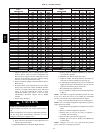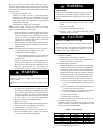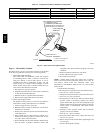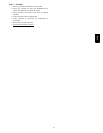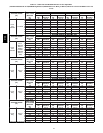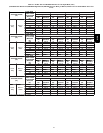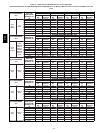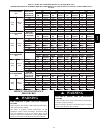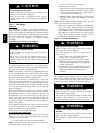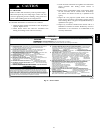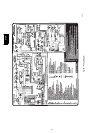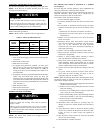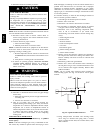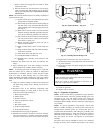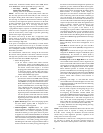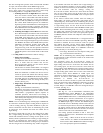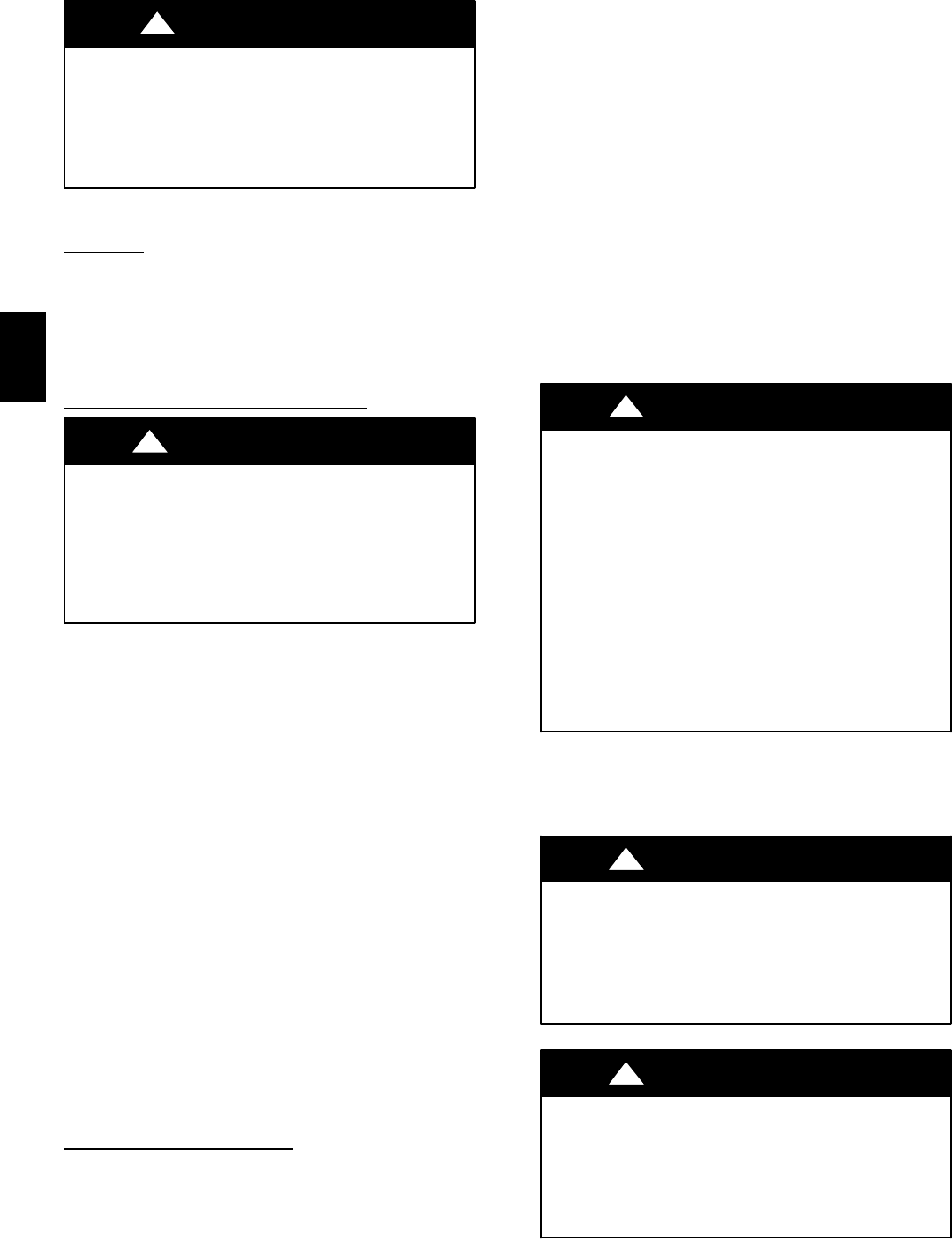
46
UNIT OPERATION HAZARD
Failure to follow this caution may result in improper unit
operation or failure of unit components.
Label all wires prior to disconnection when servicing
controls. Wiring errors can cause improper and dangerous
operation.
CAUTION
!
Step 1 — Introduction
GENERAL
These instructions are written as if the furnace is installed in an
upflow application. An upflow furnace application is where the
blower is located below the combustion and controls section of
the furnace, and conditioned air is discharged upward. Since this
furnace can be installed in any of the 4 positions shown in Fig. 4,
you must revise your orientation to component location
accordingly.
ELECTRICAL CONTROLS AND
WIRING
ELECTRICAL SHOCK HAZARD
Failure to follow this warning could result in personal
injury or death.
There may be more than one electrical supply to the
furnace. Check accessories and cooling unit for additional
electrical supplies that must be shut off during furnace
servicing.
!
WARNING
The electrical ground and polarity for 115--v wiring must be
properly maintained. Refer to Fig. 24 for field wiring information
and to Fig. 58 for furnace wiring information.
NOTE: If the polarity is not correct, the STATUS LED on the
control will flash rapidly and prevent the furnace from heating.
The control system also requires an earth ground for proper
operation of the control and flame--sensing electrode.
The 24--v circuit contains an automotive--type, 3--amp. fuse
located on the control. (See Fig. 32.) Any shorts of the 24--v
wiring during installation, service, or maintenance will cause this
fuse to blow. If fuse replacement is required, use ONLY a 3--amp.
fuse. The control LED will display status code 24 when fuse
needs to be replaced.
Proper instrumentation is required to service electrical controls.
The control in this furnace is equipped with a Status Code LED
(Light--Emitting Diode) to aid in installation, servicing, and
troubleshooting. It can be viewed through the sight glass in
blower access door. The furnace control LED is either ON
continuously, rapid flashing, or a code composed of 2 digits. The
first digit is the number of short flashes, the second digit is the
number of long flashes.
For an explanation of status codes, refer to service label located
on blower access door or Fig. 57, and the troubleshooting guide
which can be obtained from your distributor.
See Fig. 62 for a brief Troubleshooting guide.
For Controls with an Amber
LED
The stored status codes will NOT be erased from the control
memory, if 115-- or 24--v power is interrupted. The control will
store up to five (5) status codes.
1. To retrieve status codes, proceed with the following:
NOTE: NO thermostat signal may be present at control, and all
blower--OFF delays must be completed.
a. Leave 115--v power to furnace turned on.
b. Remove outer access door.
c. Look into blower access door sight glassfor currentLED
status. Removing blower access door will open blower
access door switch and terminate 115--v power to control
so that status code is not displayed.
d. BRIEFLY remove insulated terminal wire from the draft
safeguard (DSS) switch until LED goes out, then
reconnect it.
NOTE: If wire to DSS is disconnected longer than 4 sec, main
blower starts, and retrieval request is ignored.
2. When above items have been completed, the LED flashes
status code 4 times. Record this status code for further
troubleshooting. After the LED flashes status code four
times, BRIEFLY remove wire again from DSS switch
until LED goes out, then reconnect it to retrieve previous
status code (if available). Repeat as needed for more
previous status codes or until Code 11 appears.
Step 2 — Care and Maintenance
FIRE OR EXPLOSION HAZARD
Failure to follow this warning could result in personal
injury, death and/or property damage.
Never store anything on, near, or in contact with the
furnace, such as:
1. Spray or aerosol cans, rags, brooms, dust mops,
vacuum cleaners, or other cleaning tools.
2. Soap powders, bleaches, waxes or other cleaning
compounds, plastic or plastic containers, gasoline,
kerosene, cigarette lighter fluid, dry cleaning fluids,
or other volatile fluids.
3. Paint thinners and other painting compounds, paper
bags, or other paper products. Explosure to these
materials could lead to corrosion of the heat
exchanger.
!
WARNING
For continuing high performance and to minimize possible
furnace failure, periodic maintenance must be performed on this
furnace. Consult your local dealer about proper frequency of
maintenance and the availability of a maintenance contract.
ELECTRICAL SHOCK AND FIRE HAZARD
Failure to follow this warning could result in personal
injury, death or property damage.
Turn off the gas and electrical supplies to the unit before
performing any maintenance or service. Follow the
operating instructions on the label attached to the furnace.
!
WARNING
CARBON MONOXIDE POISONING AND FIRE
HAZARD
Failure to follow this warning could result in personal
injury, death, and/or property damage.
Never operate unit without a filter or with filter access door
removed.
!
WARNING
312A



